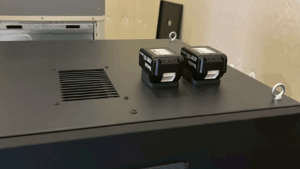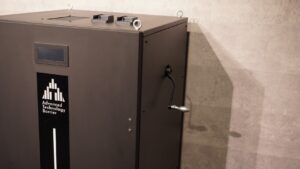-The essence of preparedness is to "keep the air moving.
During a disaster, the most important thing to focus on is "air security.
While many people focus on stockpiling water and food as a disaster countermeasure, the most urgent need is actually to secure air. In particular, in the Great East Japan Earthquake of 2011, there were many reports of respiratory illnesses caused by dust from collapsed buildings and fine particles from dried mud after the tsunami.
Inside an enclosed shelter, measured data shows that for a family of four, carbon dioxide levels exceed 5,000 ppm in about three hours, and symptoms such as headaches and difficulty concentrating begin to appear. Without proper ventilation, this enclosed space can be deadly.
The heart of the ventilation system is the power supply system, which was blacked out throughout Hokkaido during the 2018 Hokkaido earthquake, and in some areas it took up to three days to restore power. Learning from this lesson, Protect-A-Rts "AT Barrier" is designed as a ventilation system that can cope with power outages.
Shelter Practicality - Diverse Threats, Not Just Nuclear
In fact, shelter is a better option for domestic natural disaster preparedness than "nuclear".
For example, the Miyakejima eruption in 2000 caused serious health problems due to sulfur dioxide gas contained in volcanic ash, forcing all islanders to evacuate for as long as four and a half years. In addition, the risk of asbestos scattering due to building damage has been pointed out in the event of the 2022 Fukushima earthquake.
The NBC filter in the AT Barrier can collect more than 99.971 TP3T of 0.3μm particles. Experiments have confirmed that it can remove almost completely not only volcanic ash and pollen, but also fine particulate matter such as PM2.5. We also have a system in place for periodic inspections to maintain filter performance, which are performed by specialized technicians.
Ventilation does not stop when power is interrupted: double preparedness proven in the field
Based on the idea that "one backup is not enough," AT Barrier's power backup system consists of the following two stages
1. battery backup

The AT barrier allows intermittent operation using the battery even if the power is interrupted. Also born out of the needs of the job site is compatibility with Makita 18V batteries. These batteries, which are widely used in construction and engineering sites, can be replaced in sequence to provide long-term backup.
2. human-powered operation with a hand-cranked generator

Along with battery operation, hand-cranked operation is also introduced. The hand-cranked generator enables a constant airflow even in an environment without a power source. By taking turns with the personnel in the shelter, it is possible to operate the system for a long period of time.
Safety of continuity" created by multiple power supply design
AT-barrier power supply system uses multiple configurations
Normal: Commercial power supply (single-phase 100 V/200 V compatible)
Primary backup: Makita slide-in 18V battery
Secondary backup: Hand-cranked power generation
In an emergency, a person's judgment is severely impaired. We believe that the AT-barrier is not just a device, but a foundation that supports the "power to step forward" to the next action.
Finally: Air is the first necessary preparation.
As a disaster prevention specialist, I am keenly aware that "what you can't see is more important than what you can see. While it is recommended to stockpile a week's worth of water and food, in fact, a few minutes of air can mean the difference between life and death. what AT Barrier provides is not just a "machine," but time to breathe. That time will save your life and give you the strength to take the next step.
The design concept of "never stopping the air" is the true value of the ventilation system born in Japan, a disaster-prone country.


